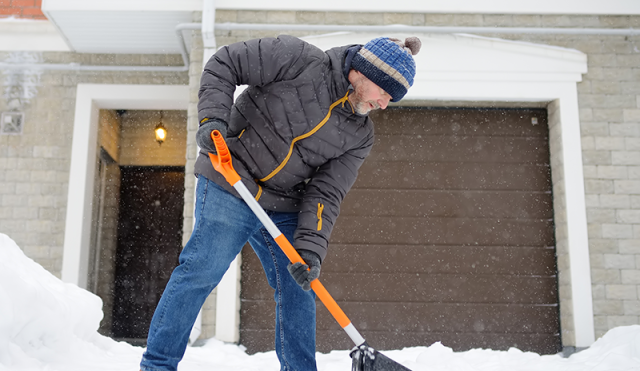7 Ways to Prep Your Home and Wallet for Winter Weather

Crisp air and colorful leaves mean sweater season is here. Still, many homes aren’t quite ready for the challenges winter brings. Snow and freezing temperatures can arrive quickly, and delaying seasonal prep risks costly problems like frozen pipes and heating failures. Start your winter prep now to protect both your home and your budget.
Check your heating system before you need it.
Schedule a furnace tune-up now while HVAC companies aren’t swamped with emergency calls. A basic maintenance visit costs much less than those middle-of-the-night emergency service calls that happen when your system fails during a cold snap. Clean or replace your air filters, too. An inexpensive filter can improve efficiency significantly, keeping more money in your pocket all season long.
Seal the sneaky air leaks.
Take a lit candle or an incense stick and carefully hold it near windows, doors, and electrical outlets on a windy day. If the flame or smoke flickers, it means cold air is sneaking in through gaps or cracks. These drafts might be small but they can cause your heating system to work harder, leading to higher energy bills. Use weatherstripping or caulk to seal these leaks and keep warm air inside.
Protect your pipes for pennies.
Wrap exposed pipes in your basement, garage, or crawl spaces with affordable foam insulation sleeves from the hardware store. This simple step prevents the nightmare scenario of coming home to a flooded house and a massive repair bill. For outdoor spigots, disconnect hoses and turn off the water supply from inside your home. Five minutes of prevention beats weeks of insurance paperwork.
Give your gutters some attention.
Clean leaves and debris from your gutters before the first freeze arrives. Clogged gutters make it easy for ice to build up and damage your roof, leading to expensive water damage inside your walls. You can tackle this yourself with a ladder and gloves, or hire a verified professional to complete the work. Either way, it’s much cheaper than replacing damaged siding or dealing with interior water damage later.
Reverse your ceiling fans.
Most ceiling fans have a switch on the motor housing that allows you to change the direction the blades spin. For winter, toggle it to rotate clockwise (typically a left-to-right motion when facing up), which pushes warm air trapped near the ceiling down into the room. Before changing the switch, turn off the fan and wait for the blades to stop spinning. If you have a remote control, look for a button labeled “reverse” or check the fan’s manual for instructions.
Insulate your water heater.
If your water heater is older or located in an unheated space like a garage or basement, consider wrapping it in an insulating blanket made for water heaters. These blankets are available at hardware stores and help reduce heat loss, saving energy and money. Follow the instructions on the package carefully to avoid covering any vents, controls, or safety features. Also, insulating the first few feet of hot water pipes coming from the heater can further improve energy efficiency.
Stock up on winter essentials.
Before the first winter storm, buy essentials such as rock salt and ice melt to safely manage ice on walkways. If you live in snowy regions, grab a snow shovel, too. Additionally, keep a flashlight, extra batteries, and some non-perishable snacks on hand in case of power outages. Buying these items early often saves money and avoids last-minute shortages during bad weather.
Even with thorough preparation, unexpected winter emergencies can arise that require extra funds. Consider setting money aside for such surprises. Opening a high-yield savings account dedicated to a winter emergency fund provides quick access to cash when you need it. This simple step can give you peace of mind and help you stay financially secure through the coldest months.
*****
Colorado Winter and Energy Assistance Resources
- Colorado Low-income Energy Assistance Program (LEAP)
Helps eligible Colorado families and seniors pay a portion of winter home heating costs, including repair or replacement of heating systems.
- Colorado Weatherization Assistance Program (WAP)
Offers no-cost weatherization services like insulation and air sealing to income-qualified residents to reduce energy bills and improve home comfort.
- Energy Outreach Colorado
Provides home energy assistance such as utility bill help, heating repairs, and energy efficiency upgrades statewide.
- Utility Bill Help Program
Refers income-qualified households to utility-specific assistance programs to reduce energy bills.
Many counties throughout the state have their own programs administered locally to assist with heating costs and weatherization. Check county human services websites for details.
